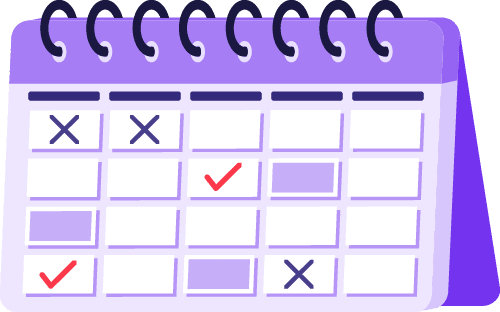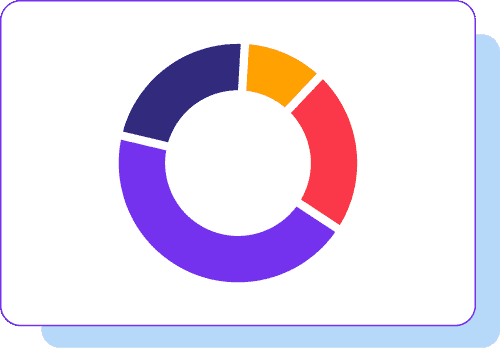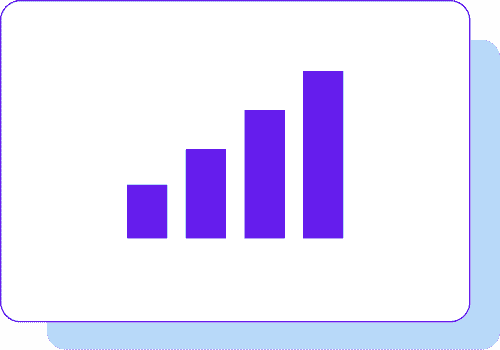In the fast-paced realm of digital marketing, where consistency is key and engagement is paramount, welcome to the next installment of Digital Mastery! In this edition, we embark on a journey that holds the reins to a more organised, strategic, and impactful social media presence—Creating a Social Media Content Calendar.
If you’ve ever found yourself scrambling to post content on the fly or wondering why your social media efforts lack a cohesive rhythm, you’re in the right place. Let’s dive into the art and science of crafting a Social Media Content Calendar that not only saves time but elevates your brand’s digital presence to new heights.
Understanding the Importance of a Social Media Content Calendar
In the chaotic dance of tweets, posts, and shares across various social media platforms, a Social Media Content Calendar emerges as your steady partner—a tool that transforms randomness into a well-orchestrated symphony. But why does it matter so much?

Why A Social Media Content Clanader Matters?
In the world of digital marketing, where attention spans are fleeting, and trends evolve in the blink of an eye, consistency is your secret weapon. A Social Media Content Calendar is your roadmap, providing a clear, organised structure for your content strategy. No more ad-hoc posts; instead, envision a strategic plan that aligns with your brand’s goals and resonates with your audience.
| Problem | Ad-Hoc Approach | Content Calendar Solution |
|---|---|---|
| Brand Identity | Inconsistent, sporadic posts | Consistent brand voice through planned content |
| Strategic Planning | Lack of alignment with marketing objectives | Strategic alignment, cohesive narrative |
| Audience Engagement | Irregular posting schedules | Scheduled posts for optimal engagement and reach |
What are the benefits of a Social Media Content Calander?
The benefits extend far beyond mere organisation. A well-structured content calendar ensures a consistent brand voice, fostering familiarity and trust among your audience. It streamlines the content creation process, allowing for better collaboration within your team and efficient use of resources. Moreover, by pre-planning your content, you gain the ability to strategically time your posts, maximising visibility and engagement.
| Benefit | Ad-Hoc Approach | Content Calendar Implementation |
|---|---|---|
| Resource Optimisation | Haphazard resource allocation | Streamlined content creation process |
| Team Collaboration | Lack of coordination | Encourages collaboration for a unified message |
| Strategic Timing | Random posting times | Maximises impact through strategic post timing |
So, buckle up as we unravel the layers of creating a Social Media Content Calendar. By the end of this journey, you’ll not only appreciate its significance but also possess the tools to build a calendar that transforms your social media presence from sporadic to strategic. Are you ready to unlock the potential of a well-organised content strategy? Let’s dive in!
Setting Objectives for Your Social Media Content Calendar
Now that we’ve established the pivotal role of a Social Media Content Calendar, let’s delve into the crucial step of setting clear objectives. Your content calendar shouldn’t be a mere schedule; it should be a strategic tool aligned with overarching marketing goals. Here’s why defining objectives is paramount and how it sets the tone for a purposeful and impactful content strategy.
Defining Goals
In digital marketing, setting specific and measurable goals is the compass that guides your content strategy. Without a clear destination, your content may lack direction and fail to resonate with your audience. Consider the following aspects when defining your objectives:
- Audience Engagement Metrics:
- Goal: Increase content engagement.
- Why: Engaged audiences are more likely to become loyal customers and advocates for your brand.
- Conversion Rates:
- Goal: Drive specific actions, such as sign-ups, downloads, or purchases.
- Why: A content calendar tailored to conversion goals ensures your content serves a purpose in the customer journey.
- Brand Awareness:
- Goal: Boost brand visibility and recognition.
- Why: Increased brand awareness lays the foundation for trust and credibility in the digital space.
Table: Sample Social Media Objectives
| Objective | Specifics | Rationale |
|---|---|---|
| Audience Engagement | Increase content engagement | Engaged audiences foster brand loyalty and advocacy. |
| Conversion Rates | Drive specific actions through content | Tailoring content for conversions contributes to ROI. |
| Brand Awareness | Enhance brand visibility on Twitter | Increased awareness builds trust and credibility. |
SMART Goals
Now that we’ve outlined the importance of setting goals, let’s introduce the SMART criteria to ensure your objectives are Specific, Measurable, Achievable, Relevant, and Time-bound. This framework transforms vague aspirations into actionable targets:
- Specific:
- Clearly define what you want to achieve. For example, “Increase Instagram engagement by 20% in the next quarter.”
- Measurable:
- Establish concrete metrics to gauge success. “Achieve a conversion rate of 5% on Facebook ad campaigns.”
- Achievable:
- Set realistic goals that challenge but do not overwhelm. “Grow Twitter followers by 10% over the next month.”
- Relevant:
- Ensure goals align with your overall marketing and business objectives. “Improve brand sentiment on social media by responding to customer feedback promptly.”
- Time-bound:
- Set a timeframe for achieving your goals. “Reach 100,000 impressions on LinkedIn within the next two weeks.”
Table: SMART Goals in Action
| SMART Criteria | Example |
|---|---|
| Specific | Increase Instagram engagement by 20% in the next quarter |
| Measurable | Achieve a conversion rate of 5% on Facebook ads |
| Achievable | Grow Twitter followers by 10% over the next month |
| Relevant | Improve brand sentiment by responding promptly to customer feedback |
| Time-bound | Reach 100,000 impressions on LinkedIn within the next two weeks |
By incorporating these SMART criteria into your Social Media Content Calendar, you not only give purpose to your content but also create a roadmap for continuous improvement. In the upcoming sections, we’ll explore tailoring your content to different platforms, understanding your audience persona, and translating your goals into actionable content themes. Stay tuned as we elevate your digital strategy to new heights through purposeful planning and execution!
SMART Goal Generator
SMART Goal Generator
Choosing the Right Platforms and Audience
Now that you’ve defined your objectives, the next crucial step in mastering your Social Media Content Calendar is understanding the unique dynamics of each platform and tailoring your content to resonate with your specific audience. Choosing the right platforms and understanding your audience persona are essential elements in ensuring your content not only reaches but engages the right audience effectively.

Platform Selection
Each social media platform has its own strengths, quirks, and user demographics. Your content calendar should align with the nature of the platforms you choose to leverage. Here’s a brief guide to some popular platforms:
- Instagram:
- Strengths: Visual storytelling, brand aesthetics, and engagement through images and videos.
- Audience: Predominantly younger demographics, visual content enthusiasts.
- Twitter:
- Strengths: Real-time engagement, trending hashtags, and concise, impactful messaging.
- Audience: Diverse audience, news seekers, professionals, and influencers.
- LinkedIn:
- Strengths: Professional insights, industry thought leadership, and networking opportunities.
- Audience: B2B professionals, job seekers, and industry experts.
- Facebook:
- Strengths: Diverse content formats, community building, and targeted advertising.
- Audience: Wide-ranging demographics, ideal for brands with varied target audiences.
Table: Platform Characteristics and Audience
| Platform | Strengths | Target Audience |
|---|---|---|
| Visual storytelling, brand aesthetics | Younger demographics, visual content enthusiasts | |
| Real-time engagement, trending hashtags | Diverse audience, news seekers, professionals | |
| Professional insights, industry thought leadership | B2B professionals, job seekers, industry experts | |
| Diverse content formats, community building | Wide-ranging demographics, ideal for varied target audiences |
Audience Persona
Understanding your audience goes beyond demographics; it involves comprehending their behaviors, preferences, and pain points. Develop detailed audience personas to tailor your content calendar effectively:
- Demographics:
- Age, gender, location, and profession.
- Behaviors:
- Online habits, content consumption patterns, and preferred interaction channels.
- Interests:
- Hobbies, preferences, and the type of content they find engaging.
- Challenges:
- Identify the pain points your audience faces that your content can address.
Table: Sample Audience Persona
| Persona | Demographics | Behaviors | Interests | Challenges |
|---|---|---|---|---|
| Social Explorer | 25-34, Female, Urban | Active on multiple platforms | Travel, fitness, lifestyle | Finding unique travel destinations |
| Tech Professional | 35-45, Male, Suburban | Regularly reads industry news | Technology, coding | Staying updated with the latest trends |
| Career Seeker | 22-28, Non-binary, Urban | Actively job hunting online | Professional development | Crafting a standout resume, Interview Preparation |
By tailoring your Social Media Content Calendar to the specific strengths of each platform and understanding the nuances of your audience, you’re better equipped to create content that resonates and engages. In the following sections, we’ll delve into crafting content themes, planning and scheduling, and leveraging trends and events to further enhance your digital mastery. Stay tuned for more insights on refining your content strategy and achieving meaningful digital impact!
Crafting Content Themes and Categories
Now that we’ve navigated the landscape of social media platforms, it’s time to delve into the creative realm of Crafting Content Themes and Categories. In this section, we’ll explore how to give your content a cohesive and engaging structure.
Defining Themes
Themes are the backbone of your content strategy. They provide a consistent narrative that connects with your audience, building a recognisable and memorable brand identity. Whether it’s telling your brand story, highlighting customer testimonials, or showcasing your team’s expertise, well-defined themes guide your content creation journey.
To get started, consider the following:
- Brand Values: Align your content with your brand’s core values. This could involve promoting sustainability, diversity, or community engagement.
- Product/Service Highlights: Showcase the features and benefits of your products or services. Use storytelling techniques to make your offerings relatable and valuable to your audience.
- Behind-the-Scenes: Take your audience behind the curtain. Share glimpses of your workspace, introduce your team, and humanise your brand.
- User-Generated Content: Encourage your audience to contribute to your content. Repost customer testimonials, reviews, and photos to create a sense of community.
Table: Content Themes
| Theme | Description |
|---|---|
| Brand Values | Align content with core brand values, such as sustainability, diversity, or community engagement. |
| Product Highlights | Showcase features and benefits of products or services using storytelling techniques. |
| Behind-the-Scenes | Take the audience behind the curtain, offering glimpses of the workspace and introducing the team. |
| User-Generated Content | Repost customer testimonials, reviews, and photos to create a sense of community. |
Content Categories
Diversifying your content is essential for maintaining audience interest. Content categories offer a structured way to organise and present your diverse range of posts. Here are some content categories to consider:
- Educational Content:
- Provide value by sharing industry insights, tips, and how-to guides.
- Establish your brand as an authority in your field.
- Entertaining Content:
- Inject humor, storytelling, or engaging visuals to entertain your audience.
- Create shareable content that enhances brand recall.
- Promotional Content:
- Showcase your products, services, or special promotions.
- Include compelling visuals and clear calls-to-action.
- Behind-the-Scenes Content:
- Humanize your brand by sharing the day-to-day workings of your business.
- Highlight team members and their roles.
- Interactive Content:
- Run polls, quizzes, or contests to engage your audience.
- Encourage participation and foster a sense of community.
Table: Content Categories
| Category | Description |
|---|---|
| Educational Content | Share industry insights, tips, and how-to guides to establish your brand as an authority. |
| Entertaining Content | Infuse humor, storytelling, or engaging visuals to entertain and create shareable content. |
| Promotional Content | Showcase products, services, or special promotions with compelling visuals and clear calls-to-action. |
| Behind-the-Scenes Content | Humanise your brand by sharing the day-to-day workings and highlighting team members. |
| Interactive Content | Run polls, quizzes, or contests to engage the audience and foster a sense of community. |
Crafting compelling themes and organising content into distinct categories ensures that your audience receives a well-rounded and engaging experience. In the next section, we’ll explore planning and scheduling your content to maximise its impact across various platforms. Stay tuned for insights into optimising your content strategy for the digital landscape!
Planning and Scheduling Content
In this section, we’ll embark on the critical journey of planning and scheduling content. Once you’ve defined your themes and categories, the next step is to strategically organise and schedule your content to ensure consistent delivery and maximum impact.

Content Calendar Tools
To streamline your content planning process, leverage the power of content calendar tools. These tools not only help organise your ideas but also provide a visual roadmap for your content strategy. Here are some popular tools and platforms to consider:
- Trello:
- Use Trello boards to organise content ideas, plan publication dates, and collaborate with team members.
- Asana:
- Asana allows you to create content calendars, assign tasks, and set deadlines, ensuring a well-coordinated content creation process.
- Hootsuite:
- Schedule posts across multiple social media platforms in advance. Hootsuite also provides analytics to measure the performance of your content.
- CoSchedule:
- This all-in-one marketing calendar allows you to plan, create, and promote content seamlessly. It integrates with major platforms and provides valuable analytics.
- Google Calendar:
- Utilise Google Calendar to create a shared editorial calendar, making it easy for your team to stay informed about upcoming content.
Table: Content Calendar Tools
| Tool | Description |
|---|---|
| Trello | Organize content ideas, plan publication dates, and collaborate with team members. |
| Asana | Create content calendars, assign tasks, and set deadlines for a well-coordinated content creation process. |
| Hootsuite | Schedule posts across multiple social media platforms in advance and measure content performance with analytics. |
| CoSchedule | An all-in-one marketing calendar for planning, creating, and promoting content seamlessly with integrated analytics. |
| Google Calendar | Create a shared editorial calendar for easy team coordination and awareness of upcoming content. |
Content Creation Frequency
Determining the optimal posting frequency is crucial for maintaining audience engagement without overwhelming them. Consider the following factors:
- Platform-specific Guidelines:
- Different platforms have varying ideal posting frequencies. While Twitter benefits from frequent updates, platforms like LinkedIn may require a more moderate approach.
- Audience Behavior:
- Understand when your audience is most active. Use analytics tools to identify peak engagement times and tailor your schedule accordingly.
- Consistency:
- Maintain a consistent posting schedule to build trust with your audience. Whether it’s daily, bi-weekly, or weekly, stick to a reliable routine.
- Content Quality:
- Prioritise quality over quantity. Focus on creating valuable content that aligns with your themes and resonates with your audience.
Table: Frequency Guidelines
| Platform | Ideal Posting Frequency | Best Practices |
|---|---|---|
| 2-3 times per day | Leverage trending hashtags and real-time updates. | |
| 1-2 times per day | Focus on visually engaging and high-quality content. | |
| 2-5 times a week | Share professional insights and thought leadership. | |
| 1-2 times per day | Use diverse content formats for community building. | |
| YouTube | 1-2 times a week | Prioritise quality video content and storytelling. |
| 5-15 pins per day | Curate visually appealing and niche-specific content. | |
| Snapchat | 4-7 times a day | Create ephemeral, engaging content for a younger audience. |
| TikTok | 1-4 times a day | Embrace short-form, creative videos and trends. |
| Quora | 2-3 times a day | Participate in discussions and share insightful knowledge. |
| 5-15 times a day | Engage in niche communities and contribute valuable content. |
Strategically planning and scheduling your content not only ensures a consistent presence but also allows for efficient team collaboration. In the next section, we’ll explore the dynamic world of incorporating trends and events into your content calendar to stay relevant and engaging. Stay tuned for insights into leveraging timely content for digital success!
Collaboration and Approval Process
In this section, we’ll delve into the collaborative aspects of content creation and establish a robust Approval Process. As your digital strategy evolves, involving team members and ensuring a streamlined approval workflow becomes crucial for maintaining consistency and brand compliance.
Team Collaboration
The essence of effective content creation lies in collaboration. Engage your team members in the content creation process to leverage diverse perspectives and skills. Here’s how to foster team collaboration:
- Brainstorming Sessions:
- Conduct regular brainstorming sessions to generate fresh content ideas. Encourage team members to share their insights and creativity.
- Content Calendar Workshops:
- Organize workshops to plan content calendars collaboratively. This ensures everyone is aligned with the overarching themes and goals.
- Collaborative Tools:
- Utilize collaborative tools like Google Workspace, Microsoft Teams, or Slack to facilitate real-time communication and document sharing.
Approval Workflow
Establishing a smooth approval process is essential for maintaining content quality, consistency, and brand alignment. Define a clear workflow that ensures each piece of content undergoes necessary reviews before publication. Here’s a suggested approval workflow:
- Content Creation:
- The content creation phase involves ideation, drafting, and designing. Assign clear roles and responsibilities to team members involved in each step.
- Initial Review:
- Conduct an initial review to ensure the content aligns with the defined themes, categories, and brand guidelines. Check for accuracy, tone, and relevance.
- Subject Matter Expert (SME) Review:
- If applicable, involve subject matter experts for a detailed review. This step ensures that content is accurate, credible, and reflects industry expertise.
- Legal and Compliance Check:
- If your industry requires compliance checks, involve legal and compliance teams to ensure the content adheres to relevant regulations.
- Final Approval:
- The final approval involves a comprehensive review by key stakeholders, including marketing managers or brand representatives. Ensure consistency with brand messaging.
Table: Collaboration and Approval Tools
| Tool | Description |
|---|---|
| Google Workspace | Facilitate real-time collaboration with document sharing features. |
| Microsoft Teams | Foster collaboration with chat, file sharing, and collaborative tools. |
| Slack | Enable team communication through channels and direct messaging. |
Interactive Content Creation Approval Checklist
Brainstorming Sessions
Content Calendar Workshops
Collaborative Tools
Approval Workflow
Initial Review
Subject Matter Expert (SME) Review
Legal and Compliance Check
Final Approval
Incorporating team collaboration and a structured approval process ensures that your content is not only creative but also aligns with brand values and messaging. As we conclude this section, you’ve gained insights into the collaborative dynamics of content creation. In the next and final section, I’ll summarise key points, encourage you to implement your learnings, and provide a teaser for the next installment of the Digital Mastery series. Stay tuned for a comprehensive wrap-up!
Conclusion
Throughout this journey, we’ve explored the intricacies of crafting a Social Media Content Calendar, from defining themes to planning, scheduling, and incorporating trends. As we wrap up, let’s summarise key points and provide a glimpse into the next steps of your digital mastery.
Conclusion
- Defining Themes and Categories:
- Themes provide a cohesive narrative, while categories diversify your content, ensuring it appeals to a broad audience.
- Planning and Scheduling:
- Utilise content calendar tools to organize ideas, and establish a posting frequency that aligns with each platform’s best practices.
- Collaboration and Approval Process:
- Foster team collaboration through brainstorming sessions and collaborative tools. Establish a structured approval workflow to ensure content quality and brand alignment.
Now, it’s time to put your newfound knowledge into action. Implement the strategies you’ve learned to refine your content creation process, engage your audience, and make a meaningful impact in the digital space.
Stay tuned for the next installment of the Digital Mastery series, where we’ll dive into how to choose the right social media platforms for your business.
Thank you for joining me on this exploration of Digital Mastery. Your commitment to refining your digital strategy is a powerful step toward achieving lasting impact in the ever-evolving online landscape. Until next time, keep mastering the digital realm!















